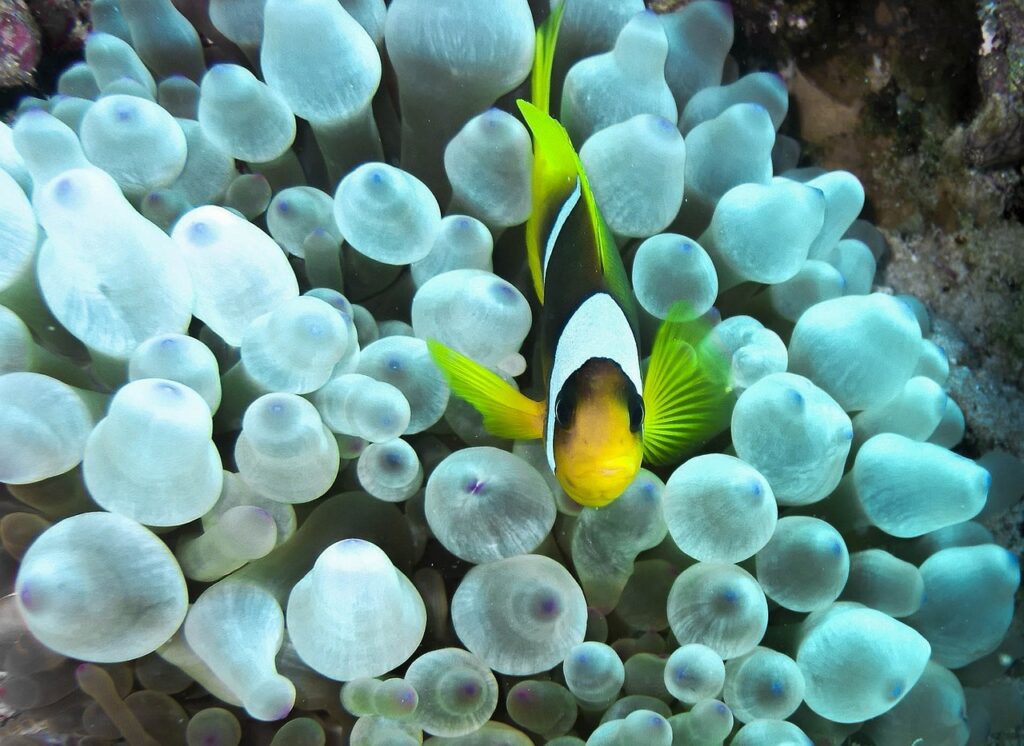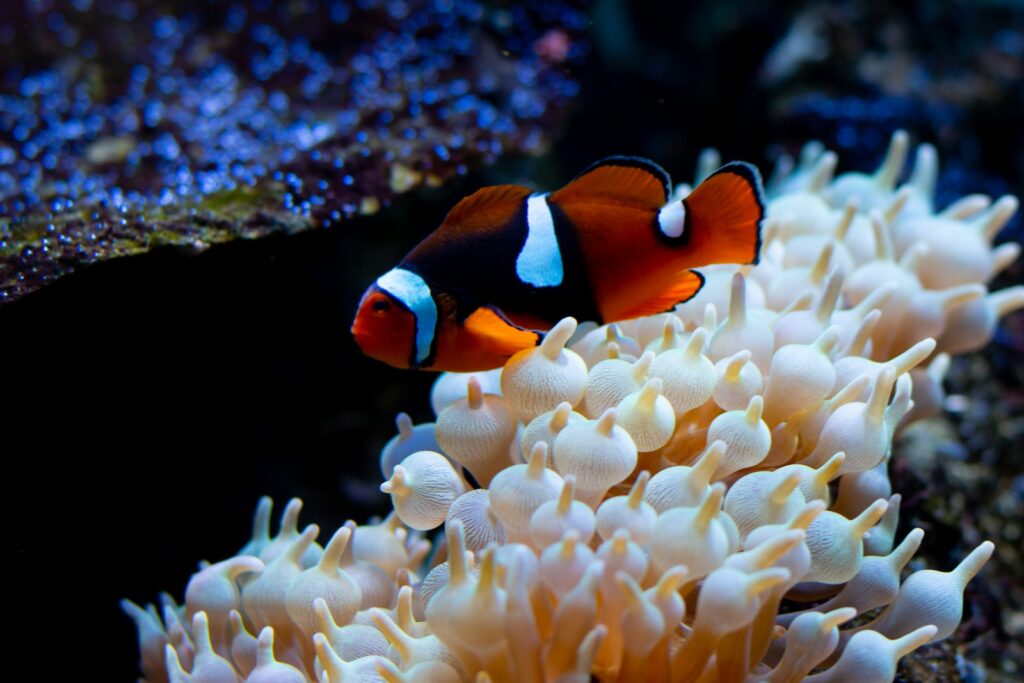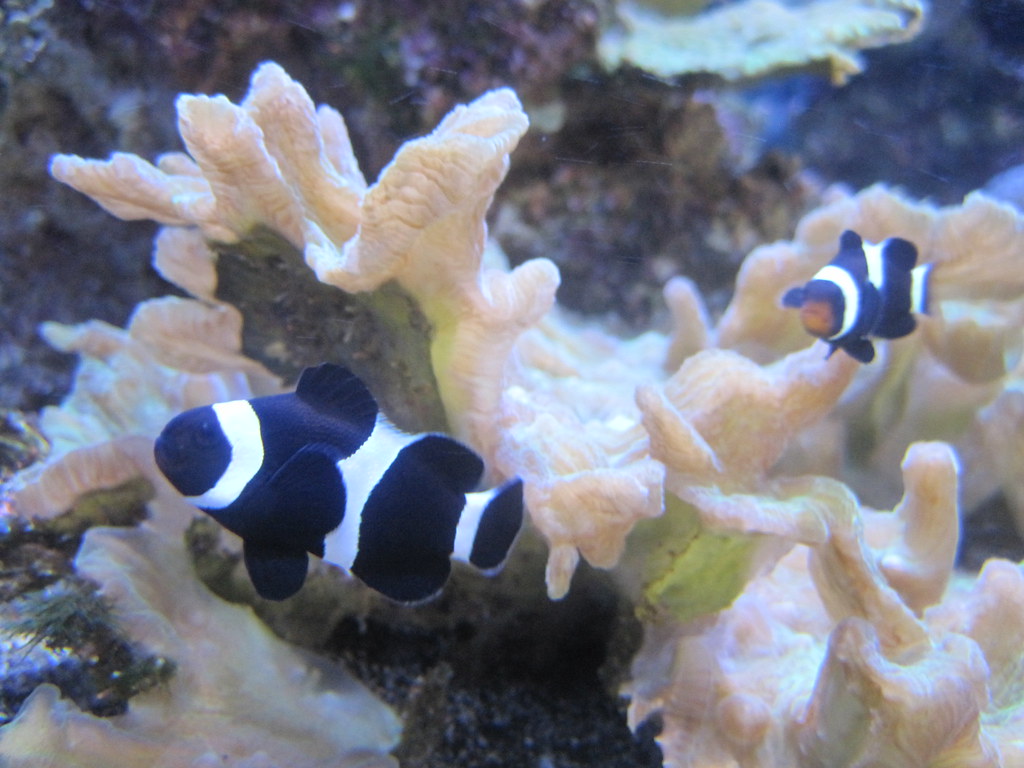Ever spotted that vibrant, eye-catching fish starring in ‘Finding Nemo’? That’s a clownfish for you! Clownfish, also known as anemonefish, are small, brightly colored fish famous for their symbiotic relationship with sea anemones. They make their homes among these tentacled creatures, gaining protection and food while also offering benefits to their hosts.
The Different Types of Clownfish
Did you know there are about 30 different species of clownfish? From the popular orange clownfish to the black, yellow, and maroon varieties, each type exhibits unique features and behaviors. They are all part of the Pomacentridae family, found primarily in the Pacific and Indian Oceans.

The Clownfish Lifespan
Factors Influencing Clownfish Lifespan
The Role of Genetics
The lifespan of a clownfish varies greatly, often based on its species. On average, a clownfish can live between 6 to 10 years in the wild, but certain species have been known to reach the ripe old age of 20 years!
The lifespan of clownfish can vary significantly depending on various factors, including genetics. While environmental conditions and care play crucial roles in determining the overall lifespan of these colourful marine fish, their genetic makeup also contributes to their longevity.
On average, a clownfish can live between 6 to 10 years in the wild, but certain species have been known to reach the ripe old age of 20 years!
Here are the role of genetics in influencing the lifespan of clownfish:
- Genetic Predisposition: Just like any other living organism, clownfish inherit certain genetic traits from their parents. These genetic factors can predispose them to certain health conditions or influence their overall vitality. Some clownfish may inherit genes that make them more resistant to diseases, while others may have genetic variations that make them more susceptible to certain health issues.
- Species and Strain Differences: Clownfish encompass various species and strains, each with its own genetic characteristics. Some species may naturally have longer lifespans compared to others. For example, some species of clownfish are known to live longer in the wild and may inherit these genetic tendencies even in captive environments. Additionally, different strains within a species can also exhibit variations in their genetic makeup and lifespan potential.
- Genetic Diversity: Maintaining genetic diversity within a clownfish population is crucial for the overall health and longevity of the species. Inbreeding, where closely related individuals mate, can lead to reduced genetic diversity and increase the risk of genetic disorders and decreased lifespan. Breeding programs that focus on maintaining genetic diversity can help preserve healthier populations with longer lifespans.
- Susceptibility to Diseases: Genetic factors can influence the clownfish’s susceptibility to diseases and infections. Some individuals may have genetic variations that provide better immune responses, making them more resistant to common diseases and infections. Conversely, other clownfish may inherit genetic traits that compromise their immune system, making them more prone to illnesses and reducing their lifespan.
- Ageing Process: The genetic makeup of clownfish can also impact their ageing process. Some individuals may possess genetic variations that slow down the ageing process and promote longevity. These genetic factors can influence various aspects of ageing, such as cellular repair mechanisms, oxidative stress resistance, and overall physiological resilience.
- Genetic Research and Breeding Programs: Scientific research and breeding programs focused on clownfish genetics can provide valuable insights into the factors influencing their lifespan. By studying the genetic makeup of clownfish populations, researchers can identify genetic markers associated with longevity and develop breeding strategies that promote healthier and longer-lived individuals.

Environmental Factors
The living conditions of clownfish significantly impact their lifespan. Water quality, diet, and the presence of sea anemones all play crucial roles.
- Water Quality and Temperature: Water quality and temperature are vital factors in the natural habitat of clownfish. These fish thrive in coral reef ecosystems with clean, clear, and well-oxygenated water. Maintaining optimal water quality is essential for their survival and longevity. Factors such as pH, salinity, dissolved oxygen levels, and water temperature must remain within suitable ranges to support their physiological functions and overall health.
- Coral Reef Health: The health of coral reefs is intricately linked to the well-being and lifespan of clownfish. Clownfish form symbiotic relationships with certain species of anemones that are found on coral reefs. Healthy coral reefs provide the necessary habitat, food sources, and protection for clownfish. Environmental threats such as coral bleaching, pollution, and habitat destruction can significantly impact the availability and condition of anemones, thereby affecting the lifespan of clownfish.
- Predation Pressure: Predation is a natural threat to clownfish in the wild. Various predators, such as larger fish, invertebrates, and birds, prey upon clownfish. The presence of natural predators influences clownfish behavior and survival strategies. Factors that affect predation pressure, such as the availability of hiding places, the abundance of predators, and the overall ecosystem balance, can impact the lifespan of clownfish.
- Food Availability: Adequate food availability is crucial for the survival and longevity of clownfish. They feed primarily on small invertebrates and algae found within their habitat. Factors such as the health of the surrounding ecosystem, nutrient availability, and seasonal variations in food availability can influence the overall well-being and lifespan of clownfish.
- Water Currents and Circulation: Water currents and circulation patterns play an important role in the natural environment of clownfish. Strong currents can impact their swimming capabilities, feeding efficiency, and ability to navigate their habitat. Factors such as the intensity and direction of currents can affect their energy expenditure, stress levels, and overall fitness, which in turn can impact their lifespan.
- Environmental Changes and Climate Events: Clownfish are influenced by natural environmental changes and climate events such as El Niño, hurricanes, or temperature fluctuations. These events can disrupt the delicate balance of their habitat, impacting food availability, water quality, and overall ecosystem health. Such disruptions can result in increased stress, reduced reproductive success, and decreased lifespan for clownfish.
Predator Threats
In the wild, clownfish face threats from various predators, including larger fish and eels. Their unique relationship with sea anemones provides some protection, as the anemone’s stinging tentacles deter most potential threats.
- Larger Fish: Larger predatory fish pose a significant threat to clownfish. Species such as groupers, wrasses, and snappers are known to prey upon clownfish, especially when they venture too far from the safety of their anemone homes. The size disparity between clownfish and their larger predators makes them vulnerable to predation.
- Invertebrates: Certain invertebrates also pose a threat to clownfish. Some species of octopuses, mantis shrimps, and crabs are known to prey upon clownfish, especially when they are small or vulnerable. These invertebrates use their specialized adaptations and hunting techniques to capture and consume clownfish.
- Birds: Some bird species, such as herons and kingfishers, are skilled hunters that can prey upon clownfish in shallow coastal waters. These birds use their sharp beaks and quick reflexes to snatch unsuspecting clownfish from the water’s surface. Clownfish that venture too close to the water’s edge may become targets for avian predators.
- Other Clownfish: In some instances, other clownfish can pose a threat to their own kind. Dominant or larger clownfish individuals may exhibit territorial behavior, defending their anemone homes and resources from intruders. This aggression can result in injury or even death for subordinate or smaller clownfish individuals.
- Marine Reptiles: Certain marine reptiles, such as sea snakes and marine turtles, may also pose a threat to clownfish. While they may not actively seek out clownfish as prey, accidental encounters can result in predation. These reptiles, with their powerful jaws or beaks, can easily capture and consume clownfish during their foraging activities.
- Human Impact: Although not natural predators, human activities can indirectly impact clownfish populations. Habitat destruction, pollution, and overfishing can disrupt the delicate balance of the ecosystem, affecting the availability of resources and compromising the overall well-being of clownfish. Indiscriminate fishing practices can lead to a decline in predator populations, disrupting the natural predator-prey dynamics and potentially affecting clownfish populations.

The Lifecycle of a Clownfish
Birth and Early Life
The journey begins when a female clownfish lays hundreds, sometimes thousands, of eggs on flat surfaces close to their anemone homes. After a careful watch by the male, these eggs hatch into larvae after a week or so, setting off to the open sea.
Adolescence and Maturity
After spending a few weeks as plankton, they metamorphose into juvenile clownfish and start their homeward journey. Once they find a suitable anemone, they settle down, begin to grow, and the cycle of life continues.
Senior Years
The oldest clownfish in a group often becomes the dominant female. After her death, the next in line, typically the largest male, changes sex to female, ensuring the survival and continuity of their group.
The Significance of Clownfish Longevity
Clownfish and Coral Reef Health
Clownfish play a crucial role in maintaining the health of coral reefs. Their symbiotic relationship with anemones contributes to biodiversity, making their longevity essential for the ecosystem’s survival.
Clownfish in Home Aquariums
In home aquariums, clownfish are popular due to their hardiness, vivid colors, and fascinating behavior. A longer-lived clownfish can provide years of enjoyment for aquarists and contribute to research on marine life.
Conclusion
The clownfish is an amazing creature, with a life cycle and lifespan as colorful and vibrant as its body. The longevity of clownfish plays a critical role not just in their survival, but also in maintaining the balance of our marine ecosystems. Understanding their life can help us protect these wonderful creatures and the oceans they call home.
How long does a clownfish live in the wild?
A clownfish can live between 6 to 10 years in the wild, with some species known to reach up to 20 years.
How long does a clownfish live in an aquarium?
In controlled conditions like home aquariums, clownfish can live up to 10 years or even more.
Do clownfish have predators?
Yes, clownfish have predators, including larger fish and eels. Their relationship with sea anemones offers some protection from these threats.
What is the role of a clownfish in the ecosystem?
Clownfish contribute to the health of coral reefs through their symbiotic relationship with sea anemones, enhancing biodiversity.
What factors influence the lifespan of a clownfish?
Factors such as genetics, environmental conditions, the availability of food, and the presence of predators influence the lifespan of clownfish.

